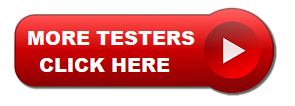Ranking of Transformer Parts by Failure Rate (from Highest to Lowest)
The most common fault parts of transformers mainly include lead insulation faults, iron core insulation faults, tap changer faults, etc. The fault handling of transformers focuses on the handling of heavy gas protection actions, the handling of automatic tripping of transformers, and the emergency handling of transformer fires. .
Common fault parts of transformers
1. Main insulation and turn-to-turn insulation faults of windings
The main insulation and inter-turn insulation of the transformer winding are the parts that are prone to failure. The main reason is: due to long-term overload operation, poor heat dissipation conditions, or long service life, the transformer winding insulation is aging and brittle, and the electrical strength is greatly reduced. ;The transformer has been impacted by short circuit for many times, causing the winding to be deformed by force, which hides insulation defects. Once the voltage fluctuation is encountered, the insulation may be broken down; at the reinforcement section of the high-voltage winding or the low-voltage winding part, due to the expansion of the overall insulation, the insulation is expanded. The blockage of the oil passage will affect the heat dissipation, the winding insulation will be aged due to overheating, and a breakdown short circuit will occur; due to the imperfect lightning protection facilities, insulation breakdown will occur under the action of atmospheric overvoltage.
2. Lead insulation failure
The lead wire of the transformer is connected to the external circuit through the inner cavity of the transformer bushing. The lead wire is supported and insulated by the bushing. Because the upper end cap (general cap) of the bushing is not tightly sealed, water enters, and the main insulation of the lead wire is damaged by moisture, or the transformer is damaged. Severe shortage of oil will expose the lead wires in the fuel tank to the air, causing internal flashovers, and failures will occur at the lead wires.
3. Core insulation failure
The transformer iron core is made of stacked silicon steel sheets, and there is an insulating paint film between the silicon steel sheets. Due to the poor fastening of the silicon steel sheets, the paint film is damaged and eddy current occurs, resulting in local overheating. Similarly, the core screws that clamp the iron core If the insulation is damaged, overheating will also occur. In addition, if there are iron filings or welding slag left in the transformer, the iron core will be grounded at two or more points, which will cause iron core failure.
4. Transformer bushing flashover and explosion
The high-voltage side of the transformer (110kV and above) generally uses capacitor bushings, which have trachoma or cracks due to poor porcelain; the capacitor core is defective in manufacturing, and there is free discharge inside; the bushing is not well sealed, and there is oil leakage; the bushing Severe fouling may cause flashover and explosion. Common fault parts of transformers_Transformer automatic and fire accident handling.
5, the tap switch failure
The transformer tap changer is one of the common fault parts of the transformer.
The tap changer is divided into two types: no-load voltage regulation and on-load voltage regulation. Common causes of failures:
1), no-load tap changer
Due to the pressure contact for a long time, there will be insufficient spring pressure and uneven roller pressure, which will reduce the effective contact area of the tap changer connection part, and the silver-plated layer of the contact part of the connection part will wear off, causing the tap changer to heat up during operation. Damage; poor contact of the tap changer, poor connection and welding of the lead wires, and can not withstand the impact of the short-circuit current, causing the tap-changer to be burned out by the short-circuit current and malfunction; switch accident
2), on-load tap-changer
For transformers with on-load tap changers, the oil tank of the tap changer and the oil tank of the transformer are generally not connected to each other. If the oil tank of the tap changer is seriously lacking in oil, the tap changer will have a short-circuit fault during switching, which will cause the tap changer to fail. Burned out. For this reason, the oil level of the two fuel tanks should be monitored separately during operation; the failure of the tap changer mechanism includes: due to the jam, the tap changer stops at the process position, causing the tap changer to burn out; the tap changer The oil tank is not tightly sealed and water seeps and leaks oil. The oil is not inspected and tested for many years, which causes the oil to be dirty and the insulation strength is greatly reduced, resulting in failure. Then arcing occurs and causes a fault.
Kingrun Transformer Instrument Co.,Ltd.


More Transformer Testers from Kingrun




